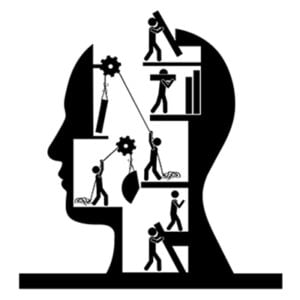What is psychoanalysis? This may be a question that many people have, but never think to ask. Psychoanalysis is an important form of psychotherapy. Sigmund Freud created it in the late 1800s and has helped countless patients since then. This article will explore psychotherapy, including what it is for and how it is different from other forms of therapy.
Contents
Meaning of Psychoanalysis

The term “psychoanalysis” was first coined by Freud. This form of therapy is about exploring the human unconscious and how it affects your thoughts, feelings, memories, and dreams. The goal of psychoanalysis is to help people achieve better mental health through understanding their subconscious processes.
Psychoanalysis is not one-size-fits-all therapy. People work with psychoanalysts for a long time. They talk about their dreams and thoughts. The sessions take place in an office. Patients lay on a couch and talk about themselves. The analyst does not interrupt them.
The analyst listens carefully and tries to understand the patient’s unconscious thoughts, feelings, and memories. The goal is to help the patient become more aware of these things so they can better manage them. Patients usually see an analyst a few times a week for many years.
History of Psychoanalysis
Freud is the founder of psychoanalysis. He was born in 1856 in Austria. Freud became interested in psychology after he read a book about it. He started to do his research and soon developed his theories about the human mind.
Freud believed that much of our behavior is driven by unconscious processes that we are not aware of. He thought that people use defense mechanisms to deal with these unconscious thoughts. These defenses can cause problems, such as anxiety and depression.
Freud started psychoanalysis because he believed it was a useful method for treating mental illness. His first patient had been suffering from hysterical convulsions. Freud developed his methods of treatment based on the theories described in his book, The Interpretation of Dreams.
Freud’s work was controversial at the time and many people did not agree with his theories. However, psychoanalysis is an effective form of therapy for many people.
How Psychoanalysis Differs from Other Therapies?

Psychoanalysis is different from other therapies in a few ways.
- First, it is a long-term therapy. Patients usually see an analyst for several years. This allows time for the patient to explore their thoughts and feelings in depth.
- Second, psychoanalysis is a one-on-one therapy session. The therapist does not interrupt the patient and allows them to talk freely. This is different than other therapies, like cognitive-behavioral therapy. It has a therapist and patient working together to fix goals.
- Third, psychoanalysis is based on Freud’s theories about the human mind. These theories may be controversial, but they give a way for you to understand how your unconscious thoughts and feelings can affect your behavior.
Psychoanalysis is a unique form of therapy that continues to help many people today. It has a long history, but it also changes as new research becomes available. This invaluable work will continue to influence the field of psychology for years to come.
Psychoanalytic Techniques
The main goal of psychoanalysis is to help people explore their unconscious thoughts and feelings. There are many different techniques used by psychoanalysts to achieve this goal. Some of these include:
- Free association – says that patients should say whatever comes into their minds without censoring themselves or trying too hard to find the right answer.
- Interpretation – the therapist helps patients understand their feelings and thoughts by providing insight from a different perspective.
- Dream analysis – dreams often have symbols or hidden messages which can be important for people to explore. Therapists help patients interpret these dreams to better understand themselves.
- Transference – happens when a patient sees their psychoanalyst as a substitute for another person in their life. This can be helpful for the therapist to understand the patient’s relationships and past experiences.
These are just some of the techniques used by psychoanalysts. There are many ways to find out what is going on in a person’s mind. They will each react differently. Therapists need to know their patients well and make sure they are using the right techniques to help.
Psychoanalytic Approaches

There are different schools of thought within psychoanalysis. Each school has a slightly different approach, but all have Freud’s original ideas in common. The main approaches include ego psychology, object relations theory, self-psychology, and Kleinian psychoanalysis.
- Ego psychology focuses on the way that people learn to cope with their unconscious feelings and thoughts. These techniques help them function in everyday life, but they can also be problematic if used too often or incorrectly. Object relations theory is based on Freud’s idea of the id-ego-superego model from The Psychopathology of Everyday Life. This article is about how people interact with other people. It looks at how this might be affected by their unconscious thoughts and feelings.
- Object relations theory: The object relations theory is a branch of psychoanalysis. It is based on Freud’s idea of the id-ego-superego model from The Psychopathology of Everyday Life. This study looks at how people are. It studies what they do and how they change. This study talks about the thoughts that people have, but not what they say.
- Self-psychology: Heinz Kohut developed it in the 1960s, self-psychology focuses on how people develop a sense of themselves. Unconscious feelings and experiences with their primary caregivers are particularly important for this concept.
- Kleinian psychoanalysis is based on work done by Melanie Klein in the 1920s about child development. It is associated with object relations theory, but it also looks at the early relationship between infants and their caregivers.
Modern Psychoanalysis
The practice of psychoanalysis, on the other hand, has seen a substantial drop in popularity. Only a tiny proportion of psychiatrists in the United States use psychoanalysis as their primary form of therapy. It is unusual to discover one who strictly follows classical psychoanalytic strategies. Modern psychoanalytic approaches that have significantly modified Freud’s version are widely used. For example, psychoanalytic therapy is becoming more frequent and more interactive as brief, time-limited versions of it become more popular. The ego is emphasized more than the id and current problems rather than early childhood traumas. Although psychoanalysis is less popular than other types of therapy, it is still a good type of therapy for people with anxiety and personality problems.
Criticism Of Psychoanalysis

Freud’s theories meet with a great deal of criticism over the years. Some say that he was sexist and racist, and his ideas are now outdated. Others argue that psychoanalysis is too expensive and takes too long to be effective. There is also some evidence that it can actually be harmful to patients in some cases.
Despite these criticisms, psychoanalysis remains an important tool for understanding human behavior. It has helped us to understand the way that our unconscious thoughts and feelings can affect our everyday lives.
- Freud thought that most people are not making their own choices about what to do. He thought people are born with feelings and they just do them, but he didn’t think about things like free will or genetics.
- Traditional psychoanalysis is a long, expensive type of therapy. It might not be good for people who only need to talk about one thing, or for people with less money.
- In traditional psychoanalysis, the therapist detaches and goes anonymous. This is because they hope that people will transfer their feelings onto them. But some people may not like this so much.
- Psychoanalysis requires people to be able to explore themselves and work through problems. If people can’t do that, then they should not do psychoanalysis. That is because they might not be able to work out their problems and think about what happened.
- Freud’s theory mostly composes of things that are impossible to see or define. This means that there is no solid evidence to support it.
Conclusion
Psychoanalysis is a type of therapy that was created by Sigmund Freud. During psychoanalysis, people talk about their dreams and free association. Both are important parts of psychoanalysis. People who need help with an issue will lie on a couch and discuss it with their therapist. They try to find the cause of the problem so it can be solved. Since psychoanalytic theory has been around since 1900, there have been many debates as to whether or not it should still be used today. Furthermore, psychoanalytic theory is based on early 20th century ideas about human behavior and what causes psychological distress. Some people think that research cannot validate Freud’s work. But, in the field of psychology, his ideas are still very important.
If you are looking for affordable Online Counseling MantraCare can help: Book a trial therapy session


